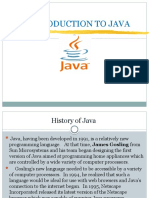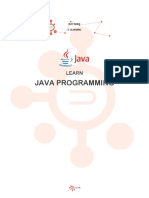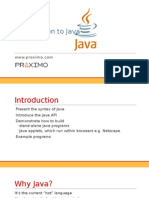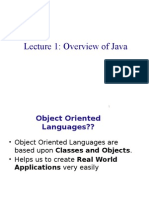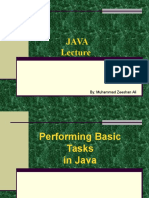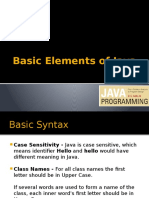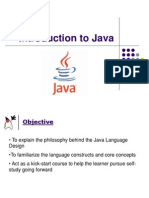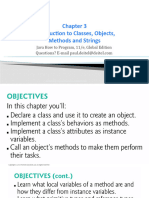0% found this document useful (0 votes)
33 views39 pagesOn Java
The document provides an introduction to the Java programming language, including its history, object-oriented concepts, basic syntax like variables, data types, operators, and control structures. It also covers classes, objects, methods, and arrays in Java.
Uploaded by
Simran jeet KaurCopyright
© © All Rights Reserved
We take content rights seriously. If you suspect this is your content, claim it here.
Available Formats
Download as PPTX, PDF, TXT or read online on Scribd
0% found this document useful (0 votes)
33 views39 pagesOn Java
The document provides an introduction to the Java programming language, including its history, object-oriented concepts, basic syntax like variables, data types, operators, and control structures. It also covers classes, objects, methods, and arrays in Java.
Uploaded by
Simran jeet KaurCopyright
© © All Rights Reserved
We take content rights seriously. If you suspect this is your content, claim it here.
Available Formats
Download as PPTX, PDF, TXT or read online on Scribd
/ 39
